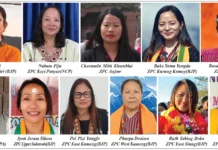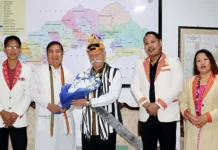[ Ripi Bagra ]
His Holiness the 14th Dalai Lama’s 90th birthday celebration in McLeodganj is about to get underway, and while the spiritual centre of Tibetan Buddhism is gearing up for the celebration, there is an undercurrent of worry.
At the heart of this lies an uncomfortable truth: China’s increasingly assertive attempt to control the deeply sacred process of Tibetan Buddhist reincarnation, particularly the selection of the next Dalai Lama.
The Dalai Lama has made it clear time and again that any successor chosen under China’s authority will not be accepted. His recent remarks, including in his book Voice for the Voiceless, reassert this position that his reincarnation will not be born in a country that is not free, hinting strongly that India could be the chosen place. This pronouncement is more than a symbolic gesture. It is a spiritual, political, and cultural defiance of China’s strategy to claim control over Tibetan Buddhism. In the backdrop of these declarations, the world waits to see if the 90th birthday will be the occasion on which the Dalai Lama provides further clarity about his reincarnation and succession plan.
China’s strategy hinges on reshaping religious authority into a political asset. The meeting earlier this year between President Xi Jinping and Gyaltsen Norbu, the Panchen Lama appointed by Beijing, after a decade-long silence, is not a spiritual endorsement but a political performance. It is a deliberate attempt to legitimise someone whom most Tibetans simply don’t trust. Gyaltsen Norbu’s rare public appearances, tightly controlled movements, and broad rejection among Tibetan Buddhists highlight the gap that official approval doesn’t translate into spiritual authority. His denial of entry to a major religious conference in Nepal in 2023 only confirmed what many had long believed – that his role is more about politics than faith.
At the core of China’s plan is a distortion of Tibetan Buddhist tradition. While it is true that historically, the Panchen Lama has played a role in identifying the Dalai Lama, and vice versa, this role has never been absolute. The identification of a reincarnated lama is a deeply spiritual process that involves combination of visions, signs, and rigorous monastic rituals conducted by senior lamas and not a decree issued by a state. The Chinese claim that their Panchen Lama’s role is “essential and decisive” is therefore not only historically inaccurate but spiritually unfounded.
The 1995 abduction of Gedhun Choekyi Nyima, the boy recognised by the Dalai Lama as the 11th Panchen Lama, remains a major issue. He has been missing for nearly three decades, his whereabouts unknown, making him the world’s longest-held political prisoner who was a child when taken. In his place, China installed Gyaltsen Norbu through a process involving the controversial golden urn, a Qing dynasty relic reappropriated by the Communist Party for its own benefit. This move, widely seen as illegitimate, marks the beginning of a campaign to establish political control over the succession of Tibetan spiritual leaders.
Beijing’s concern is that, despite seven decades of tight control and heavy-handed assimilation efforts, Tibetans still overwhelmingly revere the Dalai Lama. Official figures may be hard to come by, but anecdotal evidence suggests that majority of Tibetans inside Tibet hold the Dalai Lama in high esteem. This reverence threatens China’s narrative of legitimacy and it also challenges its attempts to cultivate loyalty through propaganda and coercion.
As the Dalai Lama’s 90th birthday approaches, the occasion is more than a celebration of a spiritual leader’s long life. It is a reminder of a larger struggle between religious autonomy and state control, between memory and silence, between faith and power. Should the Dalai Lama define the process of his reincarnation or name his successor, it will be a significant blow to China’s calculated attempt to assert control over Tibetan Buddhism. The spiritual weight of such a move, especially if endorsed by senior monks from Mongolia, India, Nepal, and Bhutan, could irreparably fracture China’s attempt to monopolise the Tibetan succession.
India has taken a careful but steady stand on the Dalai Lama’s reincarnation. By giving him asylum in 1959 and allowing the Tibetan Government-in-Exile to function from its soil, India has offered more than shelter. It has helped preserve a culture, a religion, and a way of life. While New Delhi officially recognises the Dalai Lama as a spiritual leader and avoids politicising the issue, its support for the Tibetan tradition is clear. As talk of his reincarnation grows, India is likely to maintain this quiet but firm position, ie, respecting the spiritual process while keeping a close watch on China’s growing interference, especially along the sensitive border areas.
Ultimately, the Dalai Lama’s reincarnation is more than just a religious belief; it represents Tibetan identity and resilience. Legitimacy cannot be manufactured, no matter how elaborate Beijing’s efforts become. It must be earned, and in Tibetan terms, it must be spiritual. History has shown time and again that imposed figures never truly find a place in people’s hearts. The real successor to the Dalai Lama will be the one who carries the trust of the Tibetan people and the blessings of their spiritual tradition and not the endorsement of a political regime. (The contributor is an independent researcher)




